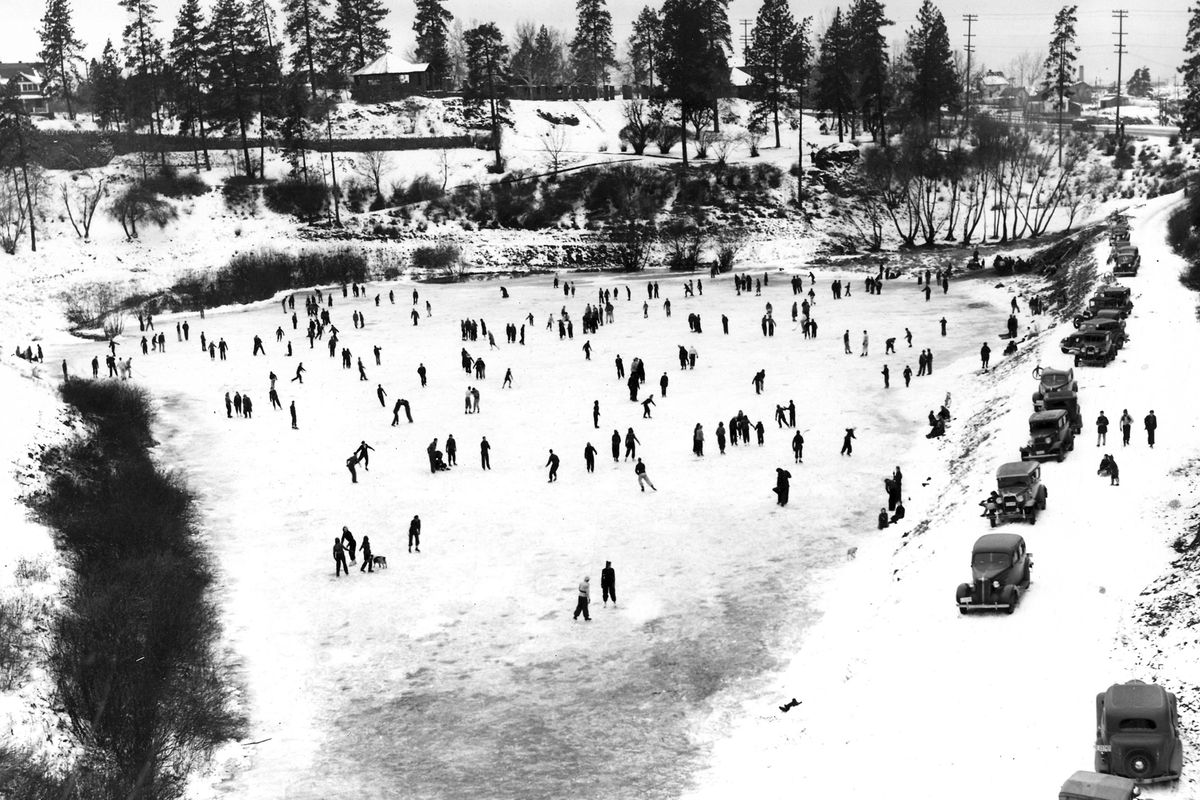Then and Now: Liberty Park gave way to I-90

When the Washington Department of Transportation was planning the route of the new interstate highway through Spokane in the 1950s, several routes were proposed.
One route was through downtown between Second and Third avenues. Another would have it run down Spokane Falls Boulevard, above Peaceful Valley and across Latah Creek with a bridge. Yet another route was uphill from Deaconess Hospital and Lewis and Clark High School. Most agreed that it should be situated where South Hill residential neighborhoods transition to the downtown business district.
Most of the plans had the new freeway going right through Liberty Park, one of Spokane’s oldest. F. Lewis Clark donated the 21 acres of sloping rocky hillside and bottomland at Third Avenue and Arthur Street to the city in 1897.
A formal park was developed in 1907. A covered promenade and gazebo-style overlook was built. Picnic areas, wading pools and gardens were added. At the bottom of the rocky hillside was a large, muddy pond where kids waded in the summer and skated in the winter.
Over the years, kids often needed rescuing from icy water or quicksand-like mud, and parks management realized the pond was more hazard than amenity. It was slowly filled in by volunteer union labor starting around 1950. A pool was built around 1920 and abandoned in the late ’50s because the tank leaked water as fast as it could be refilled.
Because of this, the Liberty Park pool was known as the coldest in Spokane. East Central residents felt slighted by the shabby condition of the pool and the planned takeover of their venerable park for the new highway.
In 1968, the DOT paid the city $630,000 for 15 acres, and the new freeway opened in the early ’70s. State Highway Commission chairman Elmer Huntley said, “It is our intention to leave the city with as good a park facility as what we interrupted.”
The DOT money was used to expand the park to the east and expand Grant Park in the Perry District. The ruins of the pillared rocky pathway and overlook are still on the hillside east of Arthur Street.
– Jesse Tinsley